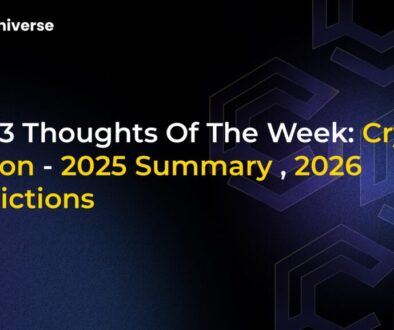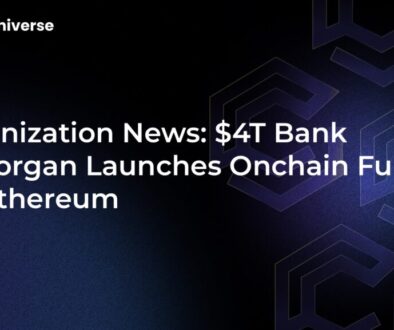Transitioning Sei Network to EVM-Only Model: The SIP-3 Proposal Explained

Sei Network at a Crossroads: The Push for an EVM-Only Future with SIP-3
The blockchain landscape is constantly evolving, and Layer 1 networks are continually seeking ways to optimize performance, enhance developer experience, and attract a wider user base. In a significant move, Sei Labs, the core development team behind the high-performance Sei (SEI) blockchain, has introduced SIP-3 (Sei Improvement Proposal 3). This proposal outlines a strategic shift for the network: a transition to an Ethereum Virtual Machine (EVM)-only model.
This move aims to streamline Sei’s ecosystem by focusing exclusively on EVM-based architecture. If adopted, it would mean phasing out support for CosmWasm smart contracts and native Cosmos transactions. Let’s dive deeper into what this proposal entails and its potential implications for the Sei Network.
What is SIP-3? Unpacking the Proposal for an EVM-Centric Sei
SIP-3 is a formal proposal to transform Sei Network into a platform that exclusively supports the Ethereum Virtual Machine. Key aspects of this proposal include:
- Phasing out CosmWasm and Native Cosmos Transactions: Currently, Sei supports a dual architecture. SIP-3 suggests deprecating support for CosmWasm contracts and native Cosmos messaging, simplifying the underlying technology stack.
- EVM Addresses for All Transactions: Under the proposed model, only EVM-compatible addresses would be able to initiate transactions on the Sei network.
- Core Functionality Remains: Importantly, essential network features such as staking and governance are planned to remain available and accessible, likely through EVM-compatible mechanisms.
The proposal signifies a decisive step towards aligning Sei more closely with the largest smart contract ecosystem in the blockchain world.
The Rationale: Why is Sei Labs Proposing an EVM-Only Model?
The decision to propose such a fundamental change is driven by several strategic considerations, primarily aimed at enhancing efficiency and fostering growth. Phillip Su, Engineering Manager at Sei Labs, and Jayendra Jog, co-founder, have highlighted the network’s impressive trajectory since the introduction of EVM support in Sei v2.
Key reasons behind SIP-3 include:
- Dominant EVM Activity: Since enabling EVM compatibility, Sei has witnessed substantial growth. Jayendra Jog noted that EVM-based activity already accounts for nearly all current usage on the network. This organic adoption signals strong developer and user preference for EVM.
- Impressive Growth Metrics: The network has reportedly reached over $500 million in Total Value Locked (TVL) and boasts 19.3 million total wallets, largely driven by its EVM capabilities.
- Simplified User and Developer Experience: Focusing on a single virtual machine environment can reduce complexity for both developers building applications and users interacting with them. It creates a more unified and streamlined experience.
- Reduced Infrastructure Overhead: Maintaining a dual architecture (EVM and CosmWasm) can be resource-intensive. Shifting to an EVM-only model can reduce the operational burden and infrastructure costs.
- Enhanced Community Cohesion: A singular development focus can help consolidate the developer community and resources, leading to more robust tooling and support.
- Future Growth Positioning: The Sei team believes that concentrating efforts on the widely adopted EVM standard will make the blockchain more efficient and better position it for sustained future growth within the competitive Layer 1 landscape.
A Phased Transition Towards EVM Exclusivity
The transition to an EVM-only model, as outlined in SIP-3, is not intended to be an abrupt switch. Instead, it’s proposed to occur in three distinct phases. This gradual approach is designed to allow the ecosystem – including users, developers, and infrastructure providers – ample time to adapt, migrate, and prepare for each stage of the change. While specific details of each phase will be critical, the phased rollout aims to minimize disruption and ensure a smoother evolution towards EVM exclusivity.
Potential Benefits of an EVM-Only Sei Network
Transitioning fully to an EVM-compatible environment offers several compelling advantages for the Sei Network:
- Access to a Mature Ecosystem: Full EVM compatibility unlocks access to the vast Ethereum ecosystem, including its extensive suite of developer tools (like Hardhat, Truffle), well-established programming languages (primarily Solidity), and a large, active global developer community.
- Improved Interoperability: An EVM-only Sei can more easily interoperate with other EVM-compatible chains, potentially fostering greater liquidity and asset movement across ecosystems.
- Enhanced Developer Onboarding: Developers already familiar with EVM can seamlessly start building on Sei without needing to learn new languages or frameworks associated with CosmWasm.
- Streamlined dApp Development: Focusing on one virtual machine allows for more concentrated efforts in optimizing tools, documentation, and support for dApp development.
- Potential for Improved Transaction Speeds and Scalability: By optimizing for a single, well-understood execution environment, Sei can potentially further enhance its transaction throughput and scalability, building on its reputation as a high-speed Layer 1. The EVM processes smart contracts, which are crucial for enabling automated and trustless transactions.
Challenges and Considerations in the Shift
While the benefits are significant, such a major transition also presents challenges that need careful management:
- Migration for Existing Users and Assets: Users who currently hold assets or interact with dApps via non-EVM addresses or CosmWasm contracts will need clear guidance and tools to migrate to EVM-compatible formats.
- Adaptation for Developers: Developers with existing CosmWasm-based projects on Sei will face the task of porting their smart contracts to the EVM. This may involve code rewriting and addressing potential compatibility differences.
- Infrastructure Adjustments: Validators, exchanges, wallet providers, and other infrastructure partners will need to update their systems to fully support an EVM-only Sei.
- General EVM Considerations: While powerful, the EVM itself has known attack vectors and potential vulnerabilities. Security best practices and continuous auditing will remain paramount.
The Sei team has acknowledged that users, developers, and infrastructure teams will need to adapt to these changes for a successful transition.
The Road Ahead: Community Input and Future Outlook
The SIP-3 proposal is currently under discussion within the Sei community. Community feedback and consensus are crucial in determining the final decision and the path forward. If approved, the transition to an EVM-only model would represent a pivotal moment in Sei’s evolution.
This strategic pivot underscores a broader trend where Layer 1 blockchains are increasingly embracing EVM compatibility to tap into its network effects and developer mindshare. For Sei, known for its focus on speed and performance, particularly for trading applications, an EVM-only approach could further solidify its niche while broadening its appeal.
In conclusion, Sei Network’s SIP-3 proposal to become an EVM-only blockchain is a bold and strategic initiative. It reflects a pragmatic approach to leveraging the strengths of the dominant smart contract platform while aiming to simplify its own architecture and enhance its growth prospects. While the transition will require careful planning and execution, the potential to create a more streamlined, efficient, and developer-friendly ecosystem could significantly shape Sei’s future in the competitive blockchain space.


